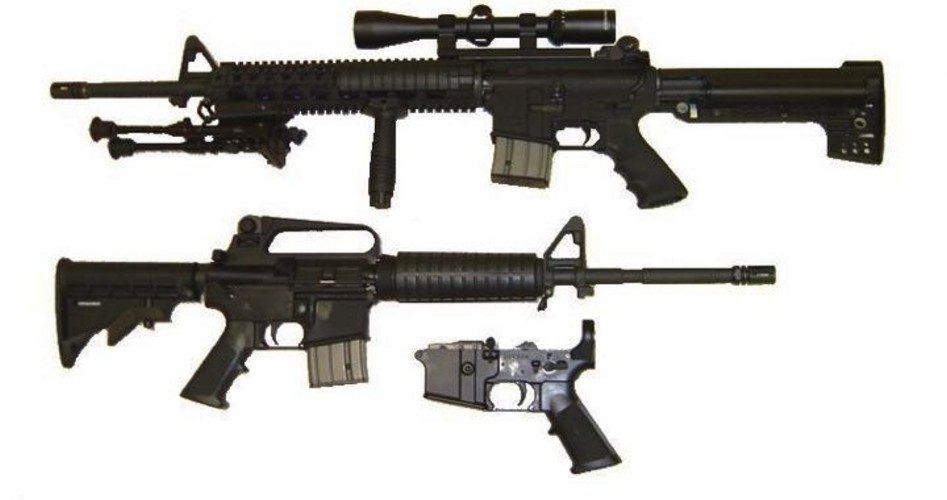
Congressional Democrats are taking aim at retrying to pass H.R. 5087, the Assault Weapons Ban (AWB) of 2018, which was referred to the House Subcommittee on Crime, Terrorism, Homeland Security, and Investigations.
Congressman David Cicilline (D-R.I.) introduced the House AWB bill along with 164 original cosponsors, on February 26, 2018. As of Tuesday, March 27, the bill boasts a total of 174 cosponsors plus Congressman Cicilline. Like Cicilline, the 174 cosponsors are all Democrats.
Last year, on November 8, Senator Dianne Feinstein (D-Calif.) introduced S.2095, a companion AWB bill, where it is also currently pending in the Senate Judiciary Committee. Senator Feinstein’s AWB currently has 29 cosponsors, all of whom are also Democrats.
While mathematically and politically speaking, neither one of these bills is likely to pass from their respective legislative chambers, support for the AWB has increased in the wake of the tragic mass shooting at Marjory Stoneman Douglas High School in Parkland, Florida.
In fact, during the White House’s bipartisan meeting on “School and Community Safety,” President Trump looked over to Senator Feinstein, who was sitting to his left, and specifically asked if she could add what she had — the Assault Weapons Ban — into the bipartisan Manchin-Toomey background check bill.
Feinstein’s face lit up with excitement at the sound of that suggestion. Fortunately, the president has backed down from his then knee-jerk support for the AWB. However, on page 102 of his book The America We Deserve, published in 2000, Trump wrote, “I generally oppose gun control, but I support the ban on assault weapons and I support a slightly longer waiting period to purchase a gun.” (Emphasis added.)
If pressured, Trump may revert to his earlier position in favor of an AWB. Nevertheless, this brings up the question: What qualifies as an “assault weapon”?
While there isn’t a formal technical definition of an “assault weapon,” the American Heritage Dictionary provides the following definition: Any of various automatic or semiautomatic firearms with detachable magazines and often other features such as a pistol grip or a collapsible stock, designed for individual use.
Senator Feinstein’s AWB bill would legally define a “semiautomatic assault weapon” as: A semiautomatic rifle that has the capacity to accept a detachable magazine and any one of the following: a pistol grip; a forward grip, a folding, telescoping, or detachable stock, a grenade launcher or rocket launcher, a barrel shroud, or a threaded barrel.
The proposed AWB would also make it illegal to manufacture or sell many semiautomatic pistols, semiautomatic shotguns, all shotguns with revolving cylinders, all Kalashnikov or “AK” rifles, various AK pistols, all AR-type rifles, and a host of other firearms named in the bill, for private use.
Furthermore, the bill, like its 1994 predecessor, would also ban all magazines, belts, drums, feed strips, and similar devices that carry more than 10 rounds. It would grandfather existing semiautomatic assault weapons and large-capacity ammunition feeding devices, however with strict regulations as to their storage and transfer.
On March 24, during the anti-gun March for Our Lives rally in Washington, D.C., Senator Feinstein tweeted in support of onerous gun control measures, including the AWB, stating:
Ban bumpstocks. Raise the age to purchase guns to 21. Universal background checks. Ban assault weapons & high-capacity magazines. Gun restraining orders. There are the actions we can take now to secure our schools and communities and make America safe again. #MarchForOurLives.
It is debated whether the 1994 AWB succeeded in reducing mass shootings for the 10 years that it was in effect, and such a bill, if enacted into law, would constitute a severe infringement on Americans’ constitutional right to “keep and bear arms” under the Second Amendment and would lead to more deaths of Americans, not less.
The National Academy of Sciences and the U.S. Centers of Disease Control — anti-gun groups — set out to find the most useful gun-control measures by scrutinizing the world’s gun-control laws. Both came to the same conclusion: Not one gun-control measure in the world actually reduced violent crime and murders. The Academy of the Sciences issued a 328-page report entitled Firearms and Violence: A Critical Review on gun-control laws in December 2004, with its findings. And across the world, including in this country, when gun-control laws have been passed, violence of all types has gone up. This has been true even in countries where gun ownership has been largely eliminated, including in England and Australia, where crimes such as robberies, rape, and murder climbed precipitously after guns were taken. Too, passing such feel-good measures would almost assuredly mean that measures that would actually help reduce mass shooters, such as allowing school staff to be armed, would likely not be passed, leaving students and others in virtual shooting galleries.
Recognizing the dangers an AWB poses to the Constitution and the adverse affects the bill would have in likely facilitating more of the very types of mass shootings that the bill’s proponents seek to prevent, The John Birch Society has created an editable, prewritten e-mail message that individuals can send to their U.S. representative and senators, asking them to oppose the passage of the AWB.
Anyone interested in sending that message should click here or phone their U.S. representative (202-225-3121) and senators (202-224-3121) in order to encourage them to oppose the passage of both AWB bills H.R. 5087 and S. 2095.
Photo: TheAlphaWolf



